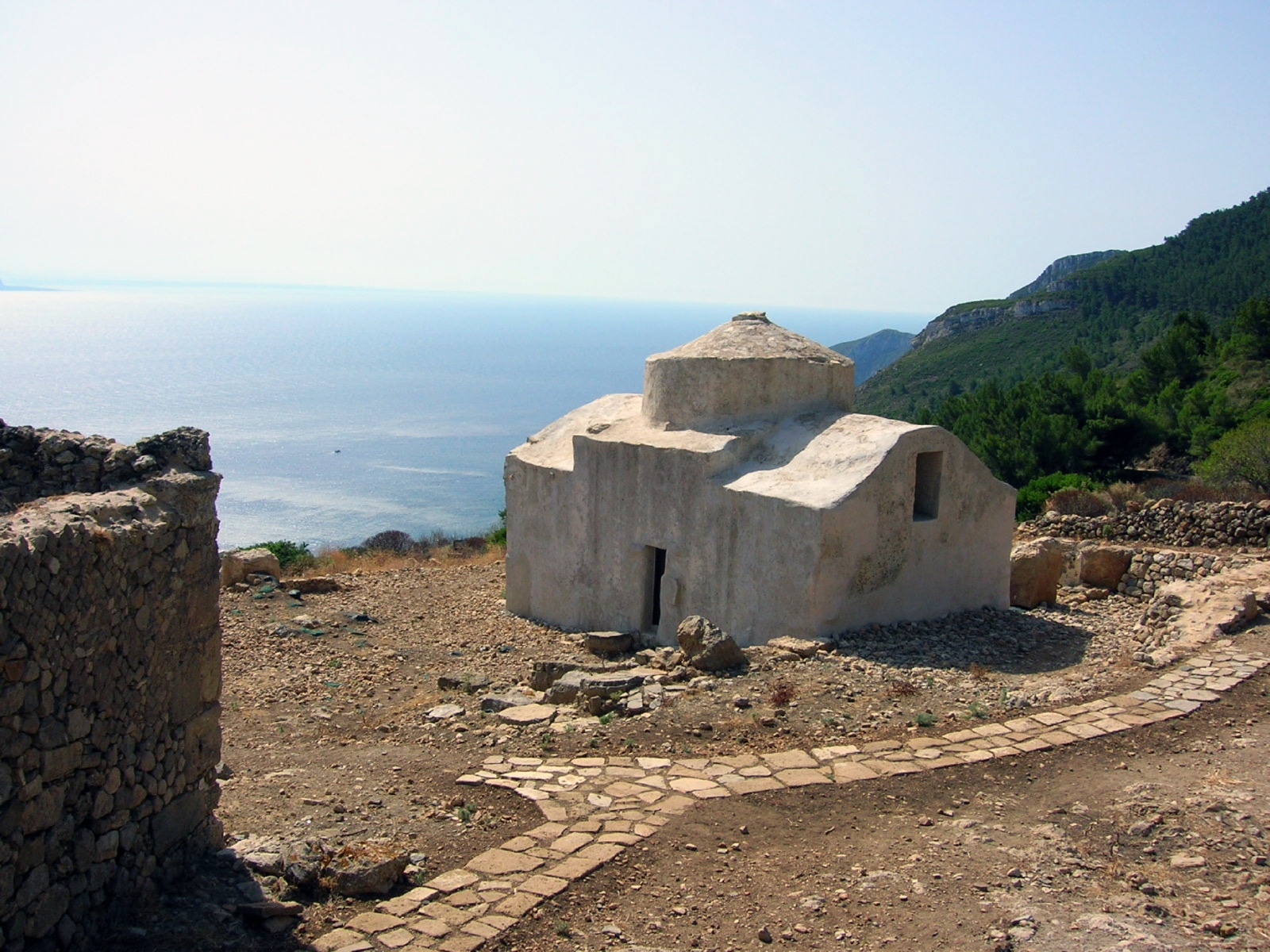Path 2: Village - Case Romane
The path begins just past the houses behind the village and climbs along the mountainside, northwards. Well paved, it winds through Mediterranean vegetation, among which it is easy to come across wild thyme bushes. After passing a spring and an abandoned rural structure, we reach a small uninhabited nucleus that contains ruins of Roman origin, a beautiful early Christian temple, with a structure that, externally, is still in good condition.
Near the ruins, a grove of natural holm oaks where one can find coolness. The 'houses', with their typical fort-like construction, can be visited inside. Next to it, the small Byzantine church dedicated to the cult of St Basil, probably dating from the 11th century, characterised by its contracted Greek cross plan. The place has clear connotations of sacredness that are perhaps linked to the presence of the richest freshwater spring on the island. The set of Roman ruins dates back to 36 B.C. with structures that were innovated and probably inhabited in the N. 5th century A.D.
Typical vegetation: Mediterranean scrub with a prevalence of lentisk, thyme, Senecio cinerario, Cisto incanus, helichrysum, lonicera. Aleppo pine, Erica arborea, Euphorbia dendroides.
| Route: | Pedestrian |
| Difficulty: | Easy |
| Distance: | 1,5 km |
| Time: | 40 min |
| Altitude difference: | 230 m |
